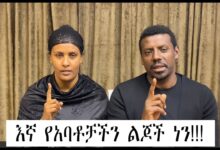Age and famous people
The Amhara and Tigray people groups of the northern and focal good countries have generally been the chief followers of the Ethiopian Customary church, and the congregation’s strict structures and convictions have been the predominant component in Amhara culture. Under the Amhara-ruled Ethiopian government, the Ethiopian Standard church was pronounced to be the state church of the nation, and it was a rampart of the system of Sovereign Haile Selassie I. Upon the nullification of the government and the organization of communism in the nation starting in 1974, the congregation was disestablished. Its patriarch was executed, and the congregation was stripped of its broad landholdings. The congregation was put on a balance of fairness with Islam and different religions in the nation, yet it by and by remained Ethiopia’s most powerful strict body.
Starting in the twelfth 100 years, the patriarch of Alexandria selected the Ethiopian diocese supervisor, known as the abuna (Arabic: “our dad”), who was consistently an Egyptian Coptic priest; this made a contention with the local itshage (abbot general) of the solid Ethiopian devout local area. Endeavors to shake Egyptian Coptic control were produced using time to time, however it was only after 1929 that a trade off was affected: an Egyptian priest was again named abuna, yet four Ethiopian diocesans were likewise blessed as his helpers. A local Ethiopian abuna, Basil, was at long last named in 1950, and in 1959 an independent Ethiopian patriarchate was laid out, albeit the congregation kept on perceiving the privileged power of the Coptic patriarch. While adjoining Eritrea acquired freedom from Ethiopia in 1993, it engaged Pope Shenouda III, the patriarch of the Coptic church, for autocephaly. This was allowed in 1994; the Ethiopian church consented in 1998 to the freedom of the new Eritrean Customary Tewahedo Church.











